Indicators and methods
Share of world publications
A country’s share of world publications is the ratio between the number of publications produced by that country and the number of publications produced worldwide. The publications of a country are those where at least one of the research laboratories that authored the publication is located in that country.
For this indicator, and those that follow, fractional counts can be used when the same publication can be linked to several countries: the weighting of the publication for a single country is then divided by the number of different countries among the signatories. In this way, the total number of publications, obtained by aggregating the fractional counts of the various countries, remains the number of publications observed worldwide.
Impact index
The impact index observed in a country (or a structure) is calculated by dividing its world share of observed citations over two years by its world share of publications. The impact index is often standardised per subspecialism to take account of the disciplinary structure of each country.
A country’s expected impact index is the impact index that the country would have if its publications were cited as much as the average for publications in the journals in which it publishes (thus taking into account the reputation of those journals).
Specialisation index
The specialisation index of a given country in a particular discipline is calculated by dividing the country's world share of publications in that discipline by its world share for all disciplines.
World share of all patent applications observed for a given patent office
A country’s share of all patent applications for a given office (for example, the European Patent Office - EPO) is the ratio between the number of patent applications from that country and the total number of patent applications recorded for that Office.
Most of the indicators are based on the date of publication of the patent applications (18 months after initial filing for the EPO, but up to 3 to 5 years for the United States Office) and the address of the inventor.
Technological specialisation index
As with publications, a country’s technological specialisation index is the ratio between the country's world share in a field of technology and the country's world share in all fields combined
Other indicators
Where applicable, other indicators may be calculated (citation classes, co-publication indicators, etc.).



